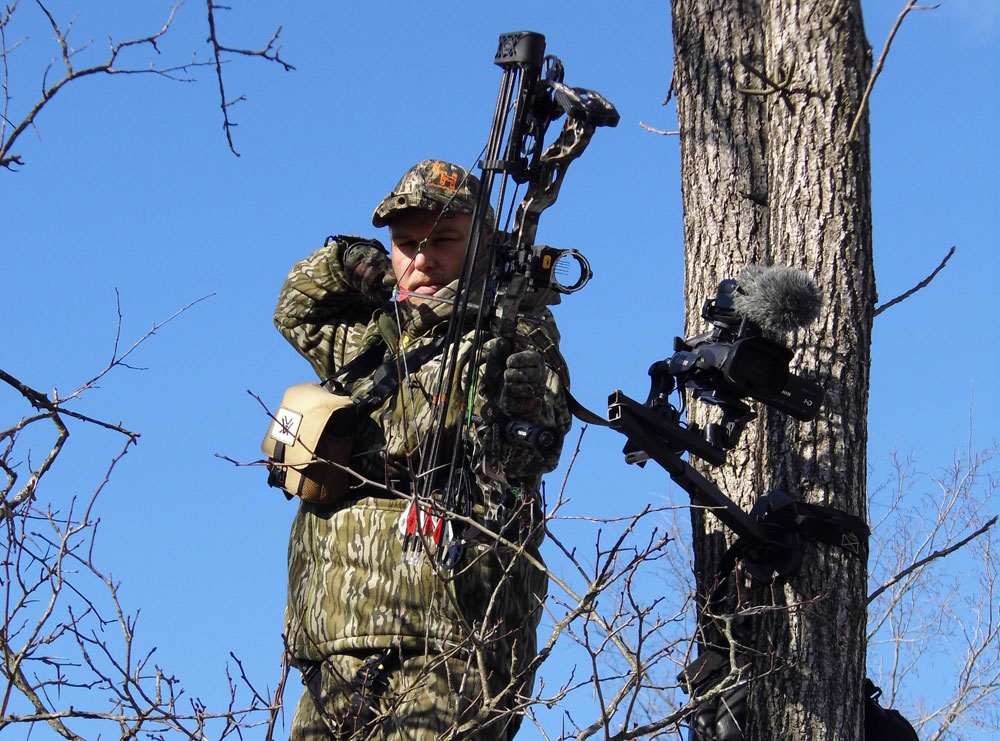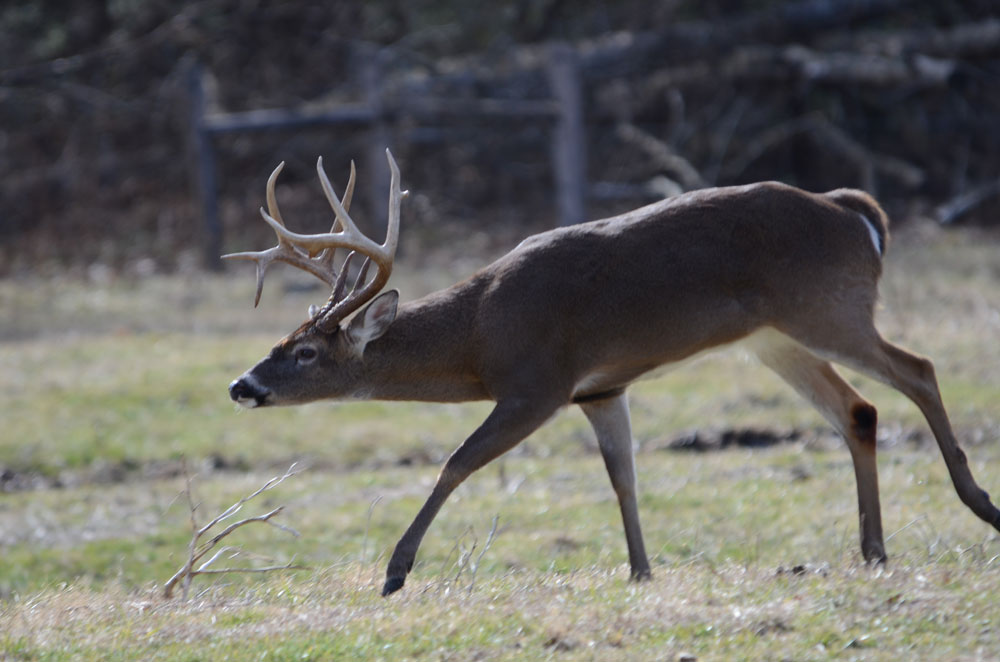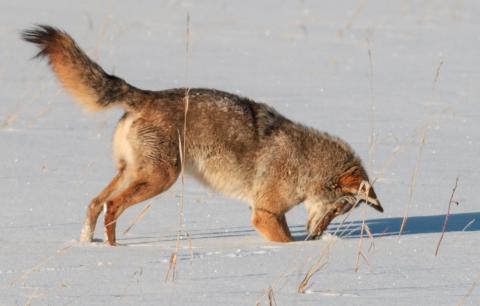Steven Reinhold’s Best Self-Filmed Buck in 2020
provided by John E. Phillips
Steven Reinhold of Nova, Ohio, has been on the Mossy Oak ProStaff for 15 years and has a TV show on the Hunt Channel titled, “True Life Hunting Adventures,” on My Outdoor TV. Reinhold started out in the TV business in 2008. “I eventually dropped out of that business because my children were growing up and going to college, and I didn’t want to miss any family time,” Reinhold explains. Then in 2018, Reinhold’s older son, Mason Reinhold, wanted to get back into the TV business, so they cranked it up then.

In “True Life Hunting Adventures,” we cover hunting waterfowl, whitetails, hogs and some exotic animals in Texas. But we hunt primarily in Ohio and Texas. I’m basically an archery hunter – particularly for whitetails - because it’s so much like a chess game. One day you think you have a buck figured out, and you believe you can go out that day and shoot that buck from your tree stand or ground blind. Perhaps the weather, the wind, the moon and the rut all tend to indicate that this is the day that you can win. However, even when you’ve got all those factors lined-up for success in your favor, that buck you’ve thought you can take on that day may not show up. Then he’s beat you again, and you’ll have to come up with a new strategy for the next day’s hunt.
My best deer this year was a 128-inch typical 8-point. I deer hunt 365 days a year. We put out minerals, hang tree stands and study trail-camera pictures year round. This buck just showed up one day, when I already had several other bucks on my hit list. I’d like to say that I had everything planned out just right to take this buck, but the honest truth is he just happened to come in to 22 yards at almost evening. I knew I could take him and get good footage for our show. When the buck took the arrow, he stood up on his hind legs and then took off like his tail was on fire.
Another advantage that I have when I’m self-filming a hunt is that I can look at the footage that I’ve taken as the buck’s approached through the flight of the arrow, see where the broadhead has hit, and learn how he’s reacted after he took the arrow. From studying the footage of the shot while I was in my tree stand, I decided that the best way to ensure that I could find that buck was to back out, leave the stand and return the next morning. Again, from the video footage, I was able to see that the arrow hit a little bit back of the spot where I was aiming.

Although we have plenty of coyotes in our general area, for some reason the coyote population where I hunt has seemed to be down. We’d filmed two coyote hunts, but I wasn’t too concerned about coyotes getting to my buck before I did. Leaving a buck overnight in coyote country is risky at best; however, I didn’t want to push this deer because I felt like he was a really good 8-point. The next morning, I went back to my stand site and then to the spot where I’d arrowed the buck. He’d gone down within 70 yards of where I’d shot him. I had left the arrow in the ground that had passed completely through the buck. Then I knew exactly where to start blood trailing. I remembered after my shot that I thought I heard the buck crash, but I wasn’t sure. From the arrow in the ground, I searched for the buck for about 25 minutes and found him piled-up in a brush pile.
If you watch many hunting TV shows, you’ll see that most producers and hosts use lighted nocks. Using a lighted nock on your arrow allows the TV viewer and you to see exactly how the arrow’s flown to the deer. That information is very important when you’re trying to make the decision to follow-up the buck on the same day you’ve shot him, or to let him stay overnight before you start blood trailing. I was self-filming my hunt – and that’s why we call the show, “True Life Hunting Adventures,” because the three of us involved self-film each one of our hunts. We sit in a tree stand by ourselves or are in a ground blind to film the deer we hunt. That makes these hunts much more challenging to get good footage.






























